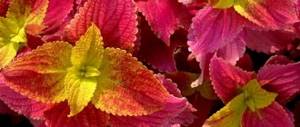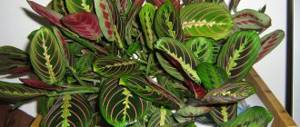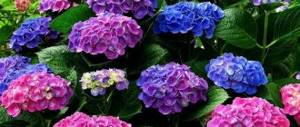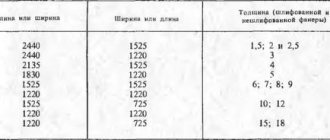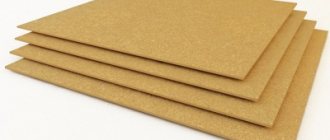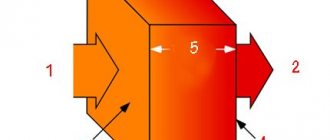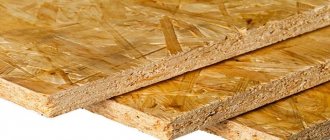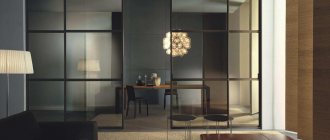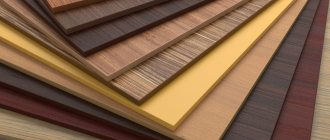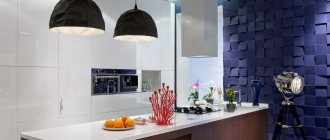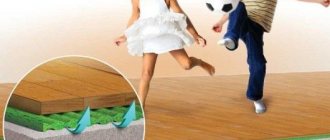Chipboard (chipboard) is made by hot flat pressing of wood particles (shavings and sawdust) mixed with a binder, mainly synthetic resins (urea-formaldehyde, urea-formaldehyde, formaldehyde resins). A valuable raw material for chipboard is any low-value wood, both coniferous and deciduous. The performance properties of chipboards mainly depend on their density, shape and size of wood particles, as well as the quantity and quality of the binder.
The raw materials for particle boards are:
— chips obtained in planing production;
— sawmill waste: slats, obapol and trimmings after trimming boards, etc.;
- specially chopped wood chips.
Chipboard is free from the disadvantages inherent in wood, such as knots, internal voids and cracks. Important advantages of chipboard include high strength, rigidity, uniformity, ease of processing, and the ability to firmly hold nails and screws. Another advantage of chipboard is its low price. That is why chipboard is the most widely used material for economy class furniture; Most office furniture is made from chipboard. For kitchens and baths, a special type of chipboard is used - with increased moisture resistance. Plates can be given biostability, hydrophobicity and fire resistance. The slabs are well glued along the sides and edges, they can be painted or finished with paints and varnishes, lined with veneer, paper, and plastics.
Chipboard varieties
There are chipboard slabs of 1st grade, 2nd grade, as well as non-grade slabs, used, as a rule, for construction purposes. The main differences between grades 1 and 2:
No protrusions or depressions, resin or paraffin stains are allowed on the first grade chipboard board;
On a first-grade chipboard slab, chipping of edges and chipping of corners is not allowed (with the exception of single chips (chipping) up to 3 mm and extending along the edge up to 15 mm); on a second-grade chipboard slab, chipping of the edges is allowed within the limits of deviations along the length (width) of the slab;
there may be grinding defects on the surface of the second grade chipboard slab (no more than 10% of the area);
On the surface of a chipboard slab of the second grade, inclusions of bark and large fractions of chips may be present to a greater extent compared to the first grade.
Chipboards are classified according to various criteria.
1. according to formaldehyde content: board E1 and E2. E1 is a more environmentally friendly material (lower formaldehyde content). E2, for example, is prohibited for the manufacture of children's furniture; 2. by grade: 1, 2, off-grade slab. For the first grade, chipping (single chips), a small amount of bark inclusions and large shavings is acceptable. The second grade may have protrusions, depressions, resin or paraffin stains, chipped edges and chipping of corners, grinding defects (no more than 10% of the surface area). A non-grade slab is characterized by non-compliance with dimensions, the presence of large cracks and chips; 3. by type of outer layer: slabs with a fine-textured surface, a regular surface or an outer layer of large chips; 4. by type of surface treatment: polished and unpolished slabs; 5. in terms of moisture resistance: slabs with normal and increased moisture resistance. In order to increase moisture resistance, paraffin emulsions or paraffin are added during the manufacturing process. An indicator of moisture resistance is the swelling of chipboard in thickness within 24 hours. So ordinary chipboard can swell by 22%, 33%, and chipboard with increased moisture resistance by 15%; 6. by physical and mechanical properties; 7. on fire resistance: the presence or absence of a special substance in the composition - a fire retardant; 8. by density: slabs of very low density (350-450 kg/m3), low (450-650 kg/m3), medium (650-750 kg/m3), high (700-800 kg/m3); 9. by number of layers: single-layer, three-layer and five-layer.
Modifications of chipboard include plywood, MDF and fiberboard, which are also widely used in the modern world.
Water resistance of chipboard
Chipboards come in regular and increased (letter “B” in the marking) water resistance. In the vast majority of cases, chipboard with ordinary water resistance is used. Chipboard with increased water resistance is advisable to use for the manufacture of countertops for kitchens, furniture for bathrooms, as well as for special construction purposes. When making waterproof chipboard, before pressing, a special paraffin emulsion or molten paraffin is introduced into the chip mass. An indicator of water resistance is swelling in thickness (over 24 hours, upper limit):
• regular chipboard, grade P-A - 22%,
• regular chipboard, grade P-B - 33%,
• waterproof chipboard - no more than 15%.
GOST and chipboard density
GOST 10632-89, GOST R 52078-2003, GOST 10632-2007 - documents regulating the quality of chipboard. 5–30% are swelling parameters in water. Bending strength - 5–30%; when stretched - 0.2–0.5 MPa. Humidity - from 5 to 12%.
Density (kg/m3):
- small - less than 550;
- average - 550–750;
- high - 750.
Classification, varieties
Chipboards come in one-, two-, three- and multi-layer types. Basically, the material has three layers: the outer layers are formed from small chips, the inner layer is made from larger raw materials. Based on the level of processing, sanded and unsanded chipboards are distinguished.
Varieties:
- First grade slabs have a smooth surface and no chips.
- Second grade material may have small scratches, delamination of the composite, or a chip on one of the lines.
- The third grade is culling. These are slabs with differences in thickness, deep delaminations, cracks, and scratches.
Material safety
Chipboard classes for the release of free formaldehyde:
- Harmless to humans - class E1 slabs. 100 g of composite contains 10 mg of formaldehyde. They can be used in children's rooms and other living spaces.
- Class E2 boards contain up to 30 mg of formaldehyde per 100 g of composite. Not used for residential premises.
Not all types of chipboard are susceptible to fire or destruction under the influence of water. There are boards with increased moisture and fire resistance. The first are obtained by adding paraffins. They are marked with the letter B. Fire resistance is achieved by fire retardants that prevent fire.
Slab processing
The decorative appearance of the slabs is ensured by:
- Covering made of several layers of paper impregnated with melamine-formaldehyde resins. Chipboard with melamine coating is called laminated.
- Laminating. Paper is also used, but the cladding is done using a different technology.
- Thermoplastic film.
- Natural wood veneer.
Where are particle boards used?
Chipboard has the advantages of natural wood, without the disadvantages of this material. It is geometrically stable, durable, and is not damaged by insects.
Slabs without decorative properties and of low grade are used for the manufacture of formwork and subfloors. First-class chipboard is a material for the production of budget furniture, roof cladding, and walls. Slabs finished with film, paper, and veneer are used for the manufacture of furniture facades and interior doors. Some materials are used for children's rooms and bathrooms: they are non-toxic and moisture resistant.
Chipboards are different. Large slabs are easy to use and have a good price-quality ratio.
Video from the Discovery Channel:
Application of particle board
The main buyer of particle board is the furniture industry, followed by the construction industry. About 50 percent of all particle boards produced are processed into furniture. The use of particle board is becoming increasingly competitive with the equally inexpensive MDF board.
Chipboard - advantages
- Low cost of chipboard compared to solid wood.
- Dense material with homogeneous composition.
- Used instead of plywood or wood if price is a determining factor.
- Particleboard can be made more attractive by painting or using laminates (veneers) on visible surfaces.
- The material is denser than ordinary wood.
- Possibility to use different types of chipboard with suitable density depending on the situation.
Minuses
A significant disadvantage of particle board is its susceptibility to expansion and discoloration from moisture absorption, especially when it is not coated with paint or other sealant.
Chipboard should not be used outdoors or in damp environments. The exception is in bathrooms and kitchens where chipboard is usually used as an underlying layer, protected by moisture-resistant paint or vinyl coating.
- Chipboard is made using additives and fillers that are harmful to health;
- The adhesive composition contains formaldehyde resins;
- Difficult processing due to the high hardness of the material;
- Unstable retention of fasteners, especially when screwing in again;
- chips and cracks during operation of finished structures.
Types of wood boards
Plywood
Plywood is a construction and finishing material that comes in sheet format and is produced by joining thin layers of wood veneer. Veneer sheets are glued together in such a way that the fibers of each subsequent layer are perpendicular to the fibers of the previous one. The number of veneer layers ranges from 3 to 23, which determines the thickness and strength of plywood. In addition, plywood is divided into 2 types: equal-layer and unequal-layer. In the first case, all layers of material have the same thickness, in the second, the middle layers are slightly thicker than the outer ones.
The technology for manufacturing wood boards of this type varies; depending on this, there are several types of plywood:
1. Peeled plywood is made by cutting thin layers of wood from a rotating log.
2. Sawn plywood is made by sawing wood into thin strips, the thickness of which does not exceed 5 mm.
3. Planed plywood is made from planed layers, the thickness of which is 3.5 mm.
Such material is also classified according to the type of raw material used. Depending on the type of wood included in the sheets, plywood is divided into the following types:
1. Deciduous material - it is made from deciduous trees, for example, maple, alder, poplar, aspen or birch. Birch is considered the most popular raw material because it is quite durable and has an attractive texture. This type of plywood is used as a finishing material, to create furniture and cars, and also in construction.
2.Coniferous plywood is made from coniferous species: pine, fir, larch and Siberian cedar. The last two types of wood are most often used for the production of decorative plywood intended for interior decoration. Since the feedstock in this case has a high resin content, the material is durable and waterproof.
3. Combined plywood contains raw materials of the two types listed above. Its distinctive features are strength and moisture resistance. The scope of use of the material is quite wide, but most often it is used for making furniture.
In addition to the above characteristics, plywood is also classified by grade:
1.FSF – this abbreviation refers to plywood with increased water-repellent characteristics. Its component composition includes phenol and formaldehyde resins - they make the material waterproof and also protect it from fungi and mold. Due to its resistance to high humidity, this plywood can be used in exterior decoration.
2.FC is plywood with average moisture resistance. Layers of such material are connected to each other using urea glue. This substance makes plywood durable, but does not give it waterproof properties. In addition, plywood of this brand does not tolerate temperature fluctuations well and is not resistant to the development of mold. Such sheets are not suitable for external use, but are widely used in interior decoration, as well as in furniture production.
3. Bakelite plywood is designated by the abbreviation FB. This material is produced by gluing key sheets with bakelite varnish and synthetic resins. The final product is moisture-resistant, fire-resistant, wear-resistant and very durable. This type of plywood tolerates temperature fluctuations and prolonged exposure to moisture well, which makes it possible to use it in exterior decoration, as well as in the shipbuilding and automotive industries.
4.FBA is plywood, the layers of which are connected to each other using albumin casein glue. This glue is of natural origin, so the material is environmentally friendly. But plywood of this type does not have high moisture resistance, so it is used only for interior work or in furniture production.
5. BS grade aircraft plywood is produced by gluing veneer sheets with bakelite alcohol-soluble glue. This glue makes plywood extremely durable and waterproof. The positive qualities of such a material also include its flexibility and elasticity, biological resistance, and the ability to withstand the influence of aggressive chemicals. This type of plywood is used in shipbuilding and aircraft manufacturing. Due to the high price, the material is rarely used in building construction.
6.BV is plywood, the layers of which are glued together with water-soluble bakelite glue. In terms of its characteristics, it is almost no different from the previous version, but is inferior to aircraft plywood in terms of its moisture resistance.
7. Laminated plywood has a special coating on both sides, which is characterized by increased strength and decorativeness. This coating is resistant to physical influences, tolerates moisture and direct contact with water, and prevents the destruction of the inner layers of plywood. Most often, this material is used for decorative interior decoration or for making furniture.
As you can see, different types of plywood have their own distinctive properties and have a specific scope of application. But all these types can be united by common positive qualities:
1.All plywood is highly durable and wear-resistant. This feature is due to the structure of the material, namely the fact that different layers of veneer have a perpendicular arrangement of fibers.
2. Plywood is easy to work with, its sheets are easily cut into fragments, and its low weight facilitates the installation process.
3. The cost of plywood is relatively low, much lower than that of solid wood. And the reason is that wood waste is often used to make the material.
4.Plywood can be bent, so it can be given different shapes. This allows you to make original figured furniture and other interesting details.
5. This material has excellent thermal insulation.
Along with its advantages, plywood also has certain disadvantages:
1. Many brands of this material do not tolerate prolonged exposure to moisture and water.
2. In the production of plywood, especially high-strength and moisture-resistant plywood, substances with a certain degree of toxicity are used.
Chipboards
Chipboards are a combination of sawdust and a binder that are bonded together under high temperature and pressed into boards. These slabs are subsequently cut into individual sheets. As a rule, the binding component is urea-formaldehyde or phenol-formaldehyde resins. Due to the fact that the component parts of the material are reliably and firmly connected to each other, chipboard slabs come in different thicknesses, while the density and uniformity of the finished product does not suffer.
Particle boards are classified according to different criteria:
1.Depending on the appearance of the material, it is divided into two grades; there are also slabs that have no grade at all. The first grade is distinguished by the highest quality: uniform structure, beautiful texture, absence of defects. The second grade has slightly worse characteristics, and chipboard without grade is considered the lowest quality material.
2.Depending on the number of layers, chipboard is divided into single-layer, double-layer and multi-layer boards.
3. Chipboards are also classified according to the type of surface treatment. Thus, there are sanded and non-sanded types of material; in addition, there is a separate variety - laminated chipboard. The sides of this material are covered with melamine film, which is glued to the boards under high pressure. There is also laminated chipboard, the outer covering of which is highly decorative.
4.Depending on the amount of formaldehyde, chipboard comes in two classes. Class E1 contains no more than 10 mg of formaldehyde per 100 g of sawdust. Class E2 contains from 10 to 30 mg of substance per 100 g of dry sawdust.
5. Chipboard is also classified according to the criteria of strength, water resistance, and hardness. There are 2 types of slabs: P-A and P-B. The first option has higher performance compared to the second.
6.The production process of such material may also vary. Pressing technology can be flat or extrusion types.
7. Depending on the density of chipboard, there are 3 types. Low-density boards have an indicator of 550 kg/m3, for medium-density chipboard this value ranges from 550 to 570 kg/m3, and high-density boards have an indicator exceeding 750 kg/m3.
8.The surface texture of particle boards also varies. Depending on this indicator, coarse-grained and fine-grained slabs are distinguished.
The general positive qualities of chipboard can be presented in the form of a list:
1. This material has higher strength characteristics when compared with ordinary wood.
2. Particle boards are moisture resistant because they contain a large amount of artificial resins.
3.The price of chipboard is significantly lower than that of natural wood.
4.The process of working with the material is not difficult.
Like any other building material, chipboard has a number of disadvantages. The most significant of them is considered to be the presence of toxic formaldehyde in the material. In addition, such plates are fragile and cannot be used in the manufacture of small parts. Self-tapping screws in chipboards become loose over time, and it is no longer possible to tighten them again in the same place.
Particle boards are used in a variety of areas: in interior decoration, in the arrangement of roofs, walls and floors of buildings, in furniture production, in the creation of warehouse racks and various collapsible structures.
Cement particle boards
Another type of wood board is cement-bonded particle board. It consists of large-format sheets made by mixing sawdust, Portland cement and various chemical additives. The components of the larger fraction are located in the central part of the slabs, the smaller particles are located outside. Thanks to this structure, the material is not only durable, but also smooth.
Cement particle boards come in several types:
1.Fibrolite is a material made from long-fiber wood chips. The density of such slabs is small and amounts to approximately 300–500 kg/m3, while the thickness reaches from 3 to 15 cm. Fiberboard is soft and light in weight, its main area of application is insulating walls and ceilings, filling frame structures. Plates of this type are very easy to use and also have good resistance to various microorganisms.
2. Arbolite is made from fine sawdust and has a higher density than its above-mentioned counterpart. Like fiberboard, wood concrete has good thermal insulation qualities, due to which it is used as insulation for walls. The material is also used to create panels, wall blocks and reinforced floors.
3.Xylolite is a combination of components such as sawdust, concrete and magnesium binder. Depending on the production technology, xylolite can be cast or tile. The distinctive properties of this material are considered to be high strength, resistance to mechanical damage, and good shockproof qualities. During the manufacturing process, xylolite can be painted in the desired shades by adding special powder pigments. Most often, this material is used for flooring, because its strength is not inferior to concrete, but it has much better thermal insulation characteristics.
The positive properties of cement particle boards include the following qualities:
- good strength characteristics, which are achieved due to the multilayer structure of the material;
-relatively low price, especially in comparison with the cost of natural wood;
- resistance to water, fire, low temperatures;
- environmental friendliness and health safety;
-excellent soundproofing qualities;
-high biological stability, thanks to which the material is reliably protected from attacks by insects and harmful microorganisms;
- ease of work;
- durability – the average service life of cement particle boards is at least 50 years;
-possibility of finishing slabs with almost any facing materials.
There are not many disadvantages of cement particle boards. These include high weight, which makes the installation process more difficult, as well as low bending strength, which is why the slabs can break if handled incorrectly.
Oriented Strand Boards
In the modern construction market, OSB boards have become quite a popular product intended for external and internal construction work. OSB boards are created by mixing shredded wood with water-resistant artificial resins. The chips are pressed with a binder under high temperature conditions. The final product is a durable multilayer material, the individual layers of which have different fiber directions. OSB boards come in several types:
1.OSB-1 is the cheapest and least durable material, not characterized by increased moisture resistance. Such boards are most often used in furniture production or in interior decoration of rooms. This material is not suitable for outdoor use.
2.OSB-2 is also not considered moisture resistant, but it has higher strength characteristics than the previous type. Slabs of this type are used to create floors, partitions, and load-bearing structures. This material is also not used for exterior decoration.
3.Moisture-resistant OSB-3 wood boards can be used in exterior decoration, because along with water-repellent properties, they also have good strength.
4. OSB-4 boards are considered the most durable and durable. They are completely unaffected by high humidity, so they can often be found in the structures of roofs, walls and load-bearing elements.
A separate type of material is laminated oriented strand boards, which are convenient to use to create reusable formwork. And slabs equipped with a tongue-and-groove system on the end sides are used as a finishing material.
The positive properties of oriented strand boards include:
1.Good strength characteristics, because during the production process of the material, layers of wood are superimposed on each other in such a way that the fibers have different directions.
2.Durability. The service life of OSB boards is at least 50 years.
3.Relative ease of operation. OSB sheets are easy to cut into pieces, and their low weight makes them easier to install. Among other things, the structure of the material is quite strong, so that when cutting and drilling, chips and cracks do not form.
3.Acceptable cost.
4.High heat-saving and sound-insulating qualities. Oriented strand wood boards for walls will provide coziness and comfort in the room.
5.Resistance to moisture and fungi.
6.Convenient format, thanks to which the finished surface will have a minimum of joints.
Oriented strand boards also have disadvantages, these include:
1.Toxic substances that are one of the components of the material. If the slabs are intended to be used in interior decoration, when purchasing, you should pay attention to their environmental class.
2. Flammability is another disadvantage of OSB boards.
3. This material requires additional insulation, as it tends to absorb water, swell and deform.
Wood fiber boards
Boards of this type are made from wood or other plant fibers, which are glued together using artificial resins. The component composition of the material also includes various additives and fillers. There are 2 ways to produce fiberboard boards. The first method is called dry and involves the use of synthetic resin. With the wet method, no chemical binders are added to the material composition.
There are 4 main types of fiberboards:
1.Superhard – these are slabs whose density exceeds 1100 kg/m3. This material has high strength and can be used to create external structures and furniture parts, as well as for floor finishing. This type of fiberboard, in turn, is divided into 2 types: ST and ST-S boards. The first option has high strength, but is not decorative. The second variety has an ennobled external side.
2. Solid fiberboard boards have a density of about 850 kg/m3. This material is also highly durable and can be used both in interior decoration and in creating external structures, for example, balcony doors. Solid fiberboard boards come in several grades that differ in their appearance. Among them, there are both non-ennobled types of material and more decorative ones, the outer side of which consists of a finely dispersed mass and is painted in various shades. The surface of fiberboard can be matte or glossy. In the first case, the slabs are painted with polyvinyl acetate water-based compositions, in the second - with enamels containing artificial resins. There are also slabs with decorative textures that imitate various surfaces. This texture is achieved thanks to special paper covered with a synthetic film on top.
3.Semi-solid fiberboards are also called MDF boards. This material is more environmentally friendly than its analogues. The positive qualities of MDF include moisture resistance, as well as resistance to fire and damage by microorganisms. MDF has a fairly high strength and is used in the production of furniture, in the decoration of walls and floors. The structure of such slabs is solid and homogeneous, so the material can be processed in all possible ways without fear of cracks and chips.
4. Soft wood fiber boards are not used in exterior decoration because they do not have sufficient strength and moisture resistance. This material has found its application in interior decoration, where it performs decorative and heat-insulating functions.
